The wine producing regions of Jacob’s Creek Reserve collection came to Sydney under one roof for a unique food and wine tour.
Pete Evans, ambassador for Jacob’s Creek Reserve Wines showcased what regionality means to food through a selection of his recipes using some of his favourite produce matched to the wines.
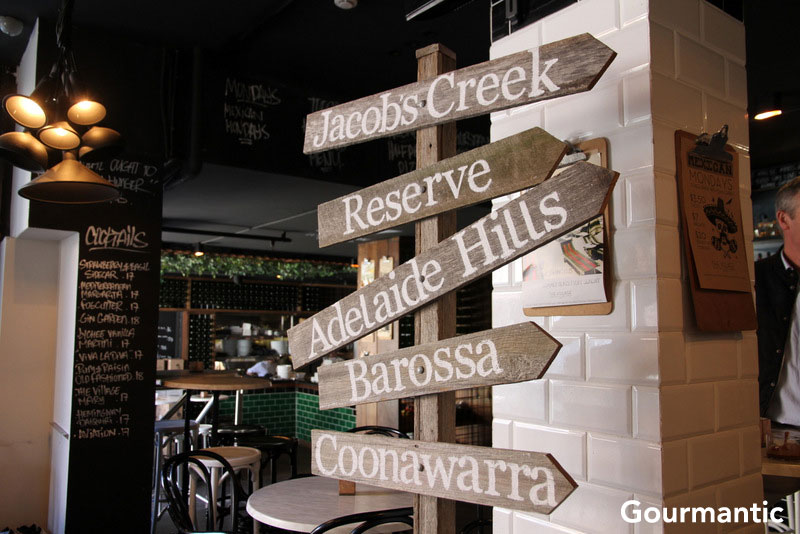
Jacob’s Creek Reserve Wines
The ABC (Adelaide Hills, Barossa Valley and Coonawarra) of Jacob’s Creek Reserve regions were set up in different sections of the Village at Potts Point, each displaying a selection of varietals, vintages and produce, with the winemakers on hand introducing the wines and leading the tasting.
Adelaide Hills: Chardonnay, Sauvignon Blanc, Pinot Noir
The Adelaide Hills is one of the largest wine regions in Australia, stretching for 70 kilometres between the Barossa and the McLaren Vale wine regions. What makes this region special is the variation in the site selection, soils and rainfall which ranges from 1400-800mm per year. The region is very hilly with a variety of micro climates which means Jacob’s Creek can have different sites for Sauvignon Blanc or Chardonnay which result in different styles of wines.
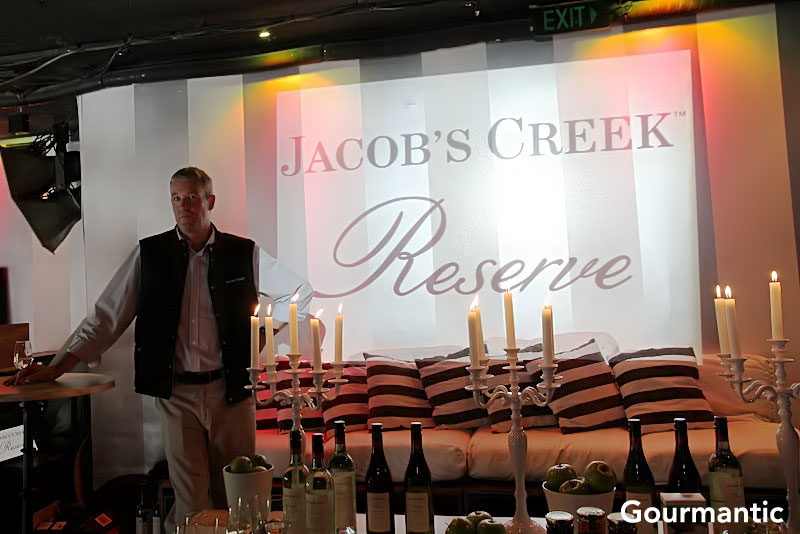
Tony Hooper, Winemaker, in the Adelaide Hills Room
Chardonnay and Sauvignon Blanc particularly like cool nights as this retains the natural acidity and natural aromas of the fruit. The daytime cool climate of the region suits these varietals but it is also the disparity between day time and night time temperatures that gives the wine its character.
“If we have hot days and hot nights then the vine at night tends to lose those varietal characteristics,” winemaker Tony Hooper explains. He believes regionality is important to wine because it comes back to the micro climate which contributes to distinct personalities of the wines.
2012 Jacobs Creek Reserve Sauvignon Blanc is made from grapes that originate from 10 to 12 areas within the Adelaide Hills. The winemaker will look at them individually and pick the best for the Reserve range. This wine has tropical passionfruit characters with a hint of cut grass which comes from a cooler climate. Warmer weather would dissipate the tropical and fruit salad characters.
When compared to Marlborough Sauvignon Blanc, Marlborough has a temperature range that can be 28C on a warm summer day down to 4C, as such it has retention of tropical aromatics and a lovely acid structure but it can be one dimensional. Jacobs Creek Reserve Sauvignon Blanchas softer acid, more roundness and a richer mouthfeel.
2012 Jacobs Creek Reserve Chardonnay is a cool climate style of wine that gives lemon, citrus, melon, white peach, nectarine, little bit of oak and vanilla characters. The fruit is to be the prime character so Jacob’s Creek have pulled back on the oak over past few years. A little malolactic fermentation gives the wine complexity, softens the acid and tends to marry fruit and oak together in more of a seamless wine.
The 2012 Jacob’s Creek Reserve Chardonnay is paired with Pete Evans’ Rock Lobster with Shallot, Chive and Chardonnay Butter.
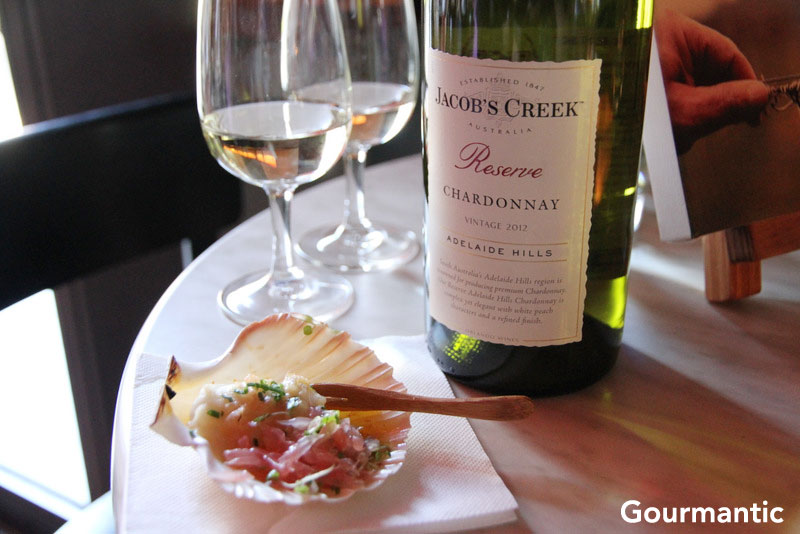
Rock Lobster with Shallot, Chive and Chardonnay Butter
Moving on to the Pinot Noir, it is known to be fussy grape variety around the world. If not treated right in the vineyard or the winery, it has an attitude problem. It favours a cool climate but not to cool. Warmer regions yield more of a dry red than a Pinot Noir.
For the Adelaide Hills 2011 Jacobs Creek Reserve Pinot Noir, different fermentation, oak levels and ripeness are used to give the wine complexity and variability. The aim is to have soft velvety tannins, and if grown in too warm a climate, the wine tend to be a little dry.
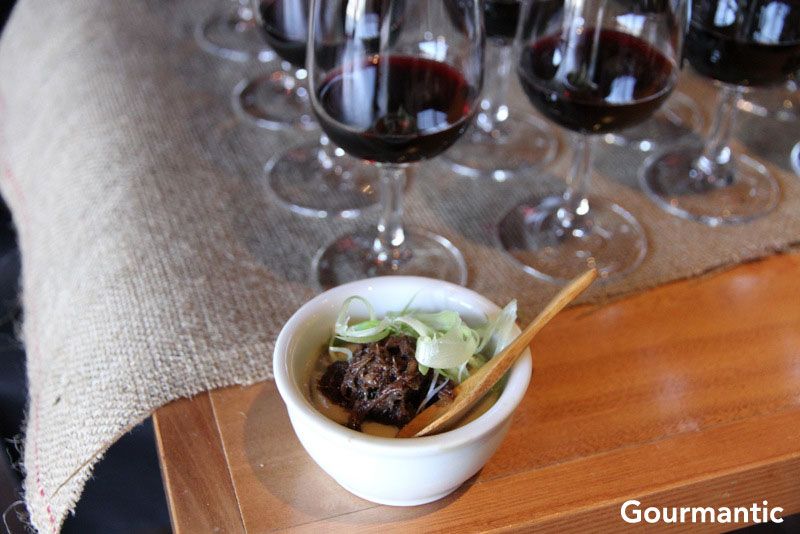
Ox tail braised in Pinot Noir
Jacobs Creek Reserve Pinot Noir is paired with dried shiitake custard and ox tail braised in Pinot Noir.
Barossa – Riesling, Shiraz
The Barossa is one of the oldest wine regions in Australia and the hub of winemaking, with a rich history in wine and food. The last fifteen years have seen a marked growth in the wine industry and an amalgamation of new and old technologies and traditions.
There are misconceptions about the Barossa, Dan Swinzer, for 12 vintages and recipient of the 2011 Wine Society young winemaker of the year explains. There is a belief that the Barossa is one homogenous area, but there is much difference and variation. The region is correctly referred to as the Barossa (not Barossa Valley) as there is the valley floor and the Eden valley with a large elevation difference between the two. There is a huge variation between north and south and when it comes to picking grape varieties from Barossa floor it ripens two weeks earlier in the south than in the north.
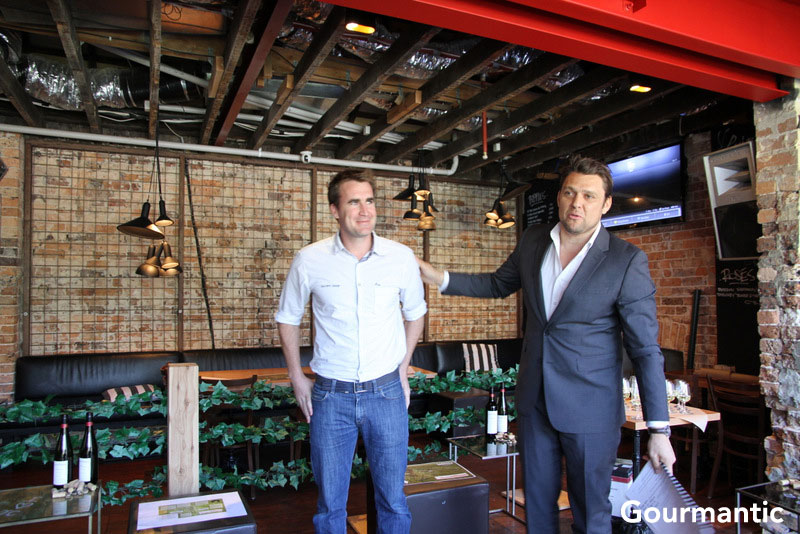
Dan Swinzer (winemaker) with Chris Morrison (Pernod Ricard) in the Barossa Room
For the 2011 Jacob’s Creek Reserve Barossa Riesling, 2011 was a cool, wet year which are unusual conditions. The vintage was a 50/50 from the valley floor and the Eden Valley. In contrast, 2012 was warmer and milder and the vintage was made exclusively from fruit from the Eden Valley which is the norm to produce a favour profile of florals, citrus lemon, pristine fruit and structural acidity.
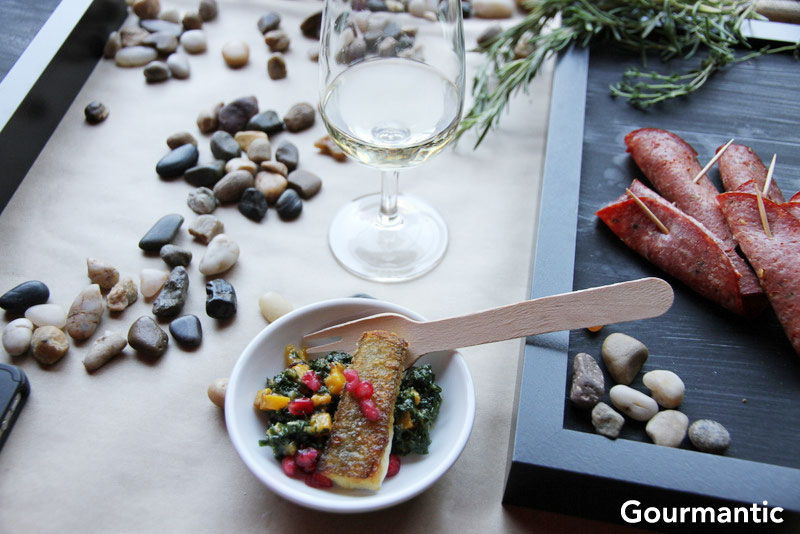
King George Whiting with Kale, Pomegranate and Butternut Squash
Jacob’s Creek Reserve Riesling is paired paired with King George Whiting with Kale, Pomegranate and Butternut Squash.
The Barossa Shiraz is a very special wine and the winery was established in 1847. The varietal is ideally suited to the Australian climate and the reserve range seeks to show the character that the Barossa gives to Shiraz.
Fruit is collected from various sub regions in the area. The aim is for a richness and softness of fruit, density of colour, chocolate spice with clove, plush red fruit on the palate and drinkability, either relatively young or for cellaring.
Fruit from the south of the Barossa shows the freshness and opulence with all the clove and spice. A very small percentage of new oak gives softness and structure and adds vanilla flavours.
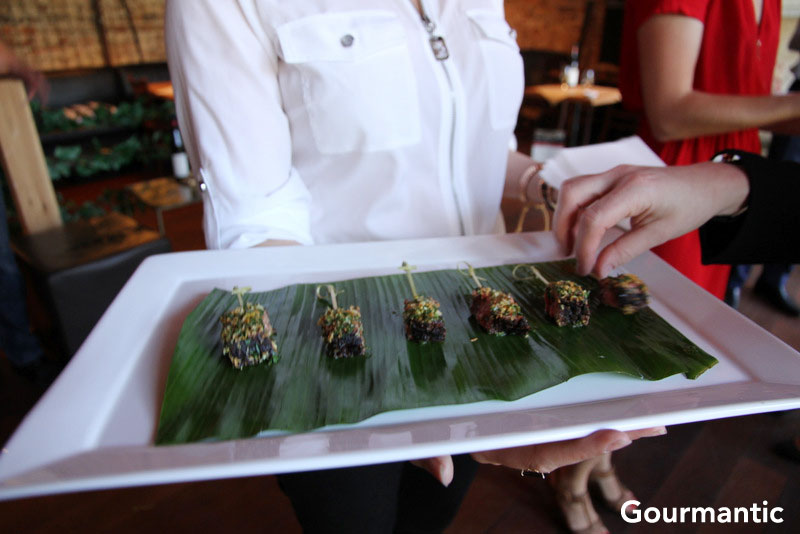
Wagyu Ribeye Cap with Grapefruit Gremolata
The 2010 Jacob’s Creek Reserve Shiraz is paired with Wagyu Ribeye Cap with Grapefruit Gremolata.
Coonawarra – Cabernet Sauvignon
The Coonawarra is a renowned region for Cabernet Sauvignon and has been growing grapes since 1890. It is a fertile area 60 km from the sea with a maritime influence. What is unique to it is the deep shelf off the coast. When the winds pick up, cold water and cool air are taken across the land.
Unlike the Barossa, the region does not have extreme heat and has a cooling breeze at night. A long ripening period gives more tannins and Cabernet is about structure, winemaker Susan Mickan explains.
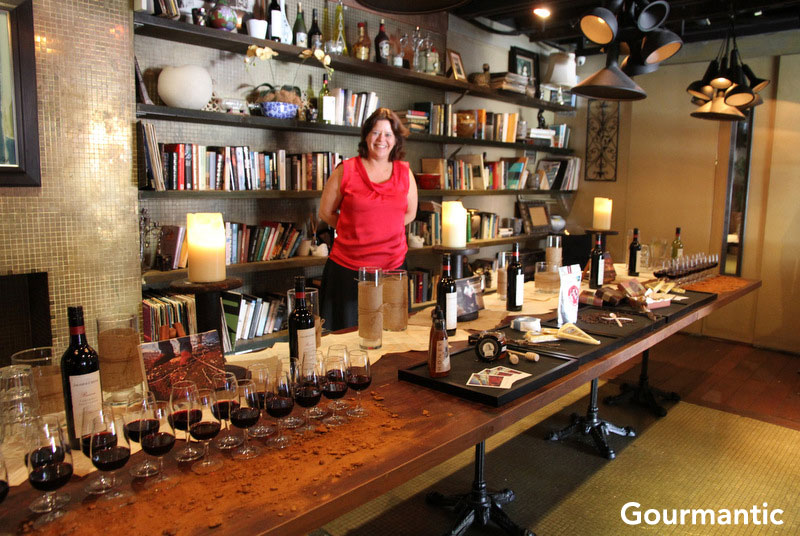
Susan Mickan (Winemaker) in the Coonawarra Room
Cabernet is more linear across the palate due to fine tannins which is another reason why the wines can age so well.
2010 Jacob’s Creek Reserve Cabernet Sauvignon is paired with Lamb Confit with Wild Olives and Feta. The lamb is a sweet tasting meat and the cabernet is a savoury wine which provides a contrast in flavours.
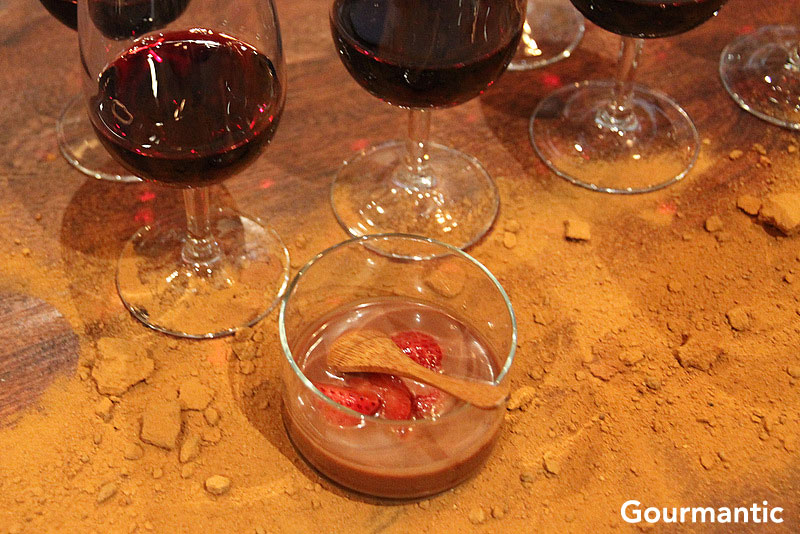
Roasted Strawberries with Dark Chocolate and Smoked Chilli
The food and wine tour concluded with Pete Evans’ dessert of Roasted Strawberries with Dark Chocolate and Smoked Chilli.
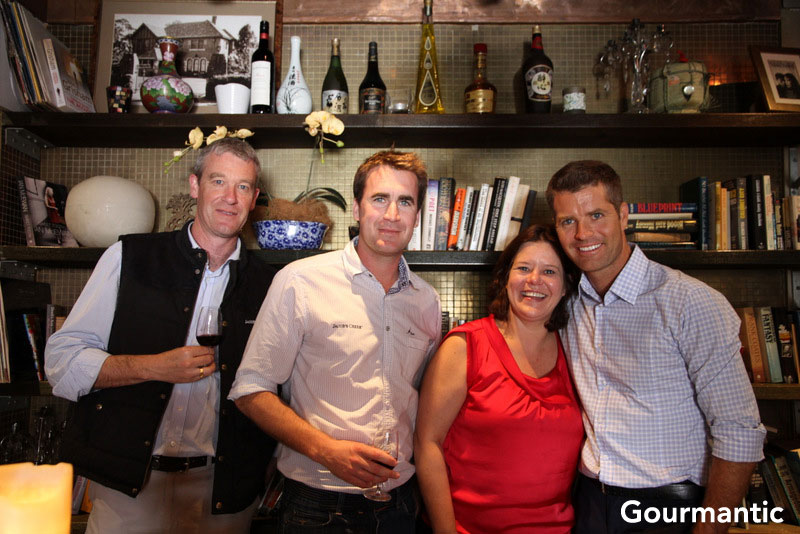
L-R: Tony Hooper (Winemaker), Daniel Swincer (Winemaker), Susan Mickan (Winemaker), Pete Evans (Chef)
The Jacob’s Creek Reserve Wines Food & Wine Tour was held at The Village in Potts Point on Thursday 6 December, 2012.
Jacob’s Creek
http://www.jacobscreek.com.au
Gourmantic attended the media event on Thursday 6 December 2012.




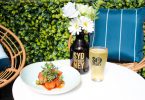

[…] Clare Valley is just like the Barossa…” he says to me as we stand in the lobby of what can only be described as an iron shed, […]
[…] Australia will proudly boast its wine regions, with many recommending a day trip to the Barossa, McLaren Vale or the Clare Valley for an extended break. While the Adelaide Hills are a neat wine […]
[…] the country. If wine is your favourite tipple, choose from Wolf Blass Wines, Petaluma White Range, Jacobs Creek Reserve Wines, Omrah by Plantagenet from Western Australia, and the cheeky Saint and Sinner […]
[…] Jacob’s Creek Reserve Ambassador, before being seated at long shared tables. A selection of Jacob’s Creek Reserve wines were served throughout the three hour lunch with included 2012 Riesling from the Barossa, 2012 […]
[…] and the Blanc de Blanc, a crisp, zesty and fresh style of sparkling that is easy-drinking. The Jacob’s Creek Reserve range, synonymous with fine drops such as Chardonnay and the Caberbet Sauvignon were also on […]